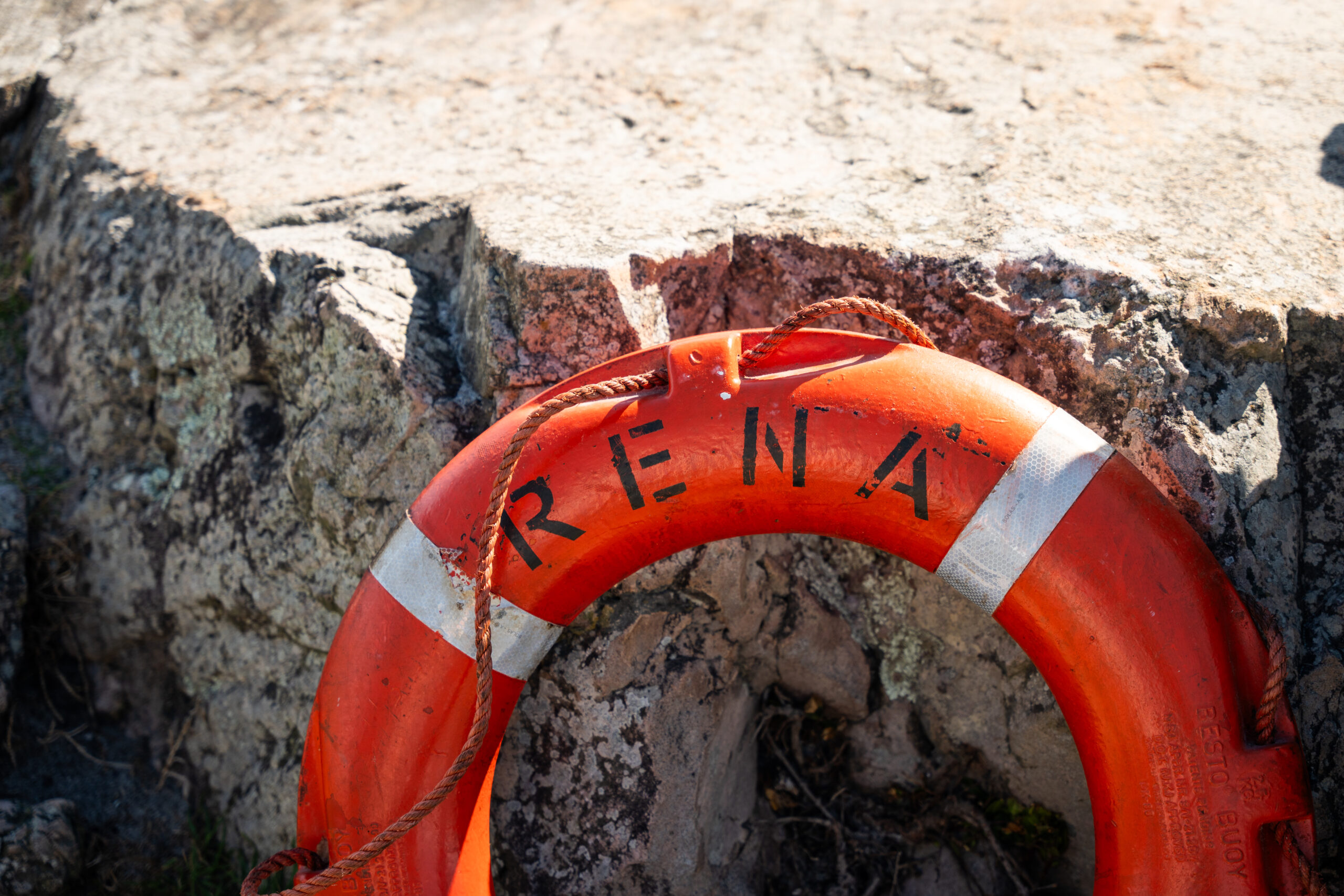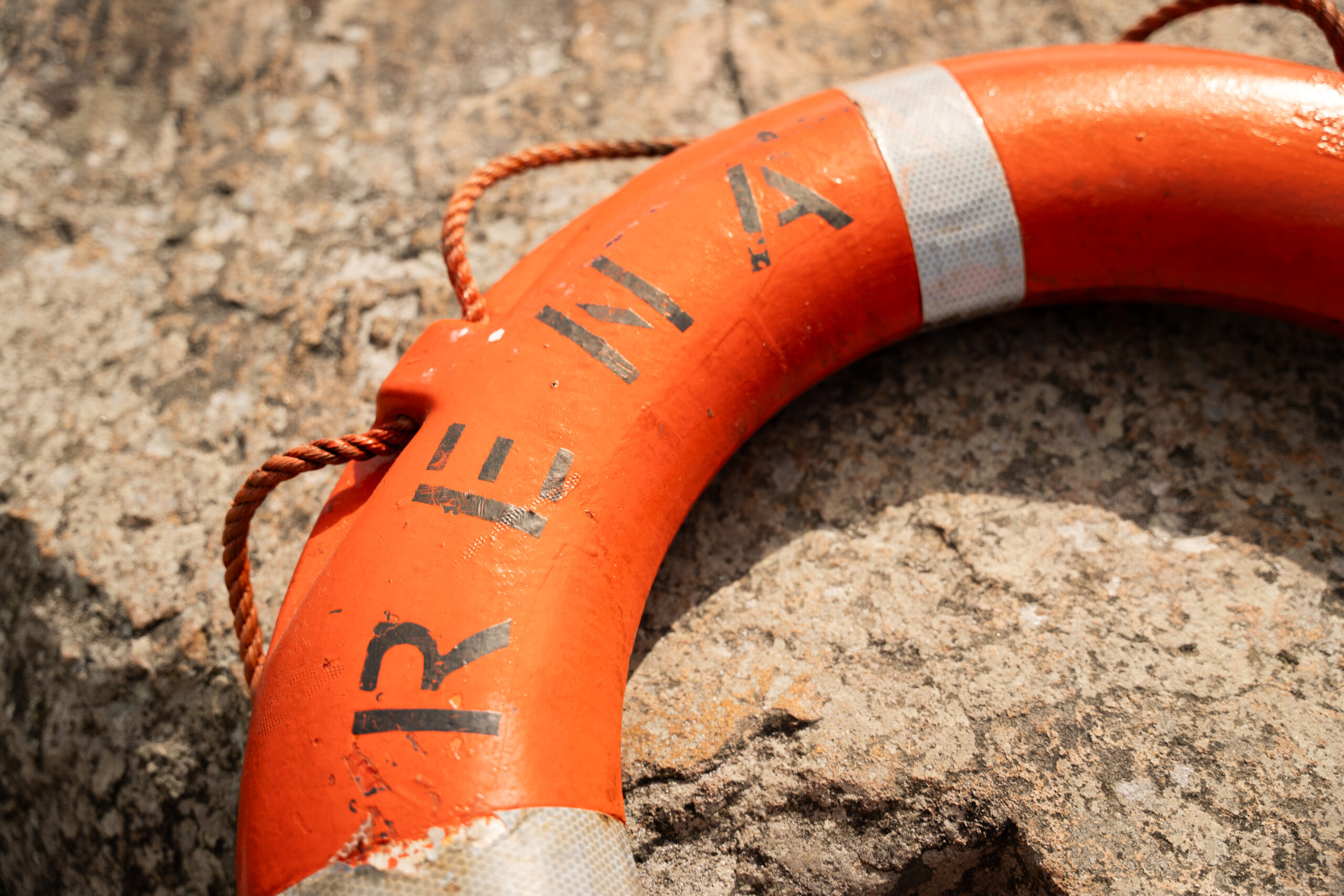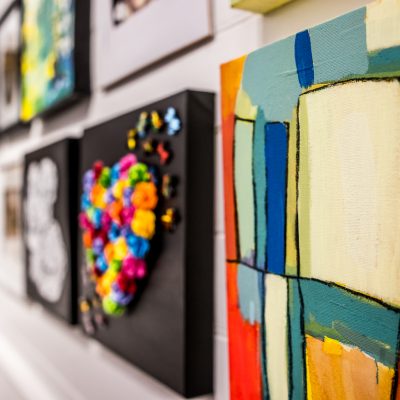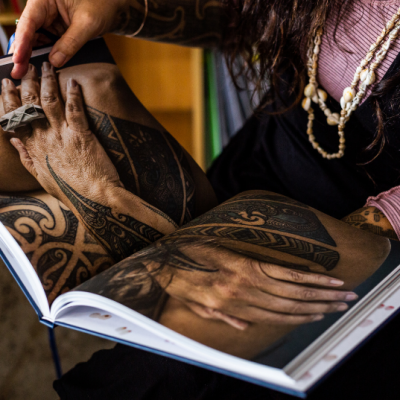Creative Patapatai
Filmmakers Anton Steel and Rosalie Liddle Crawford are two of the creative minds behind Taking Back Our Beach, a documentary which delves into the inspiring narrative of local heroes. Produced by Anton, Rosalie, and Claire Rogers, the film commemorates the 12th anniversary of New Zealand’s largest environmental catastrophe, the Rena shipwreck, and captures the resilience of our community.
Your occupation, job title, artistic discipline (or very brief description of what you do)
Anton Steel: I am a film maker and content creator. This includes; conceptualising, writing, and planning/organizing the shoot, overseeing/directing the shoot to ensure the creative vision is maintained throughout all the curveballs that this part of the process invariably brings, then editing together hundreds if not thousands of shots to tell the story.
Rosalie Liddle Crawford: Journalist, screenwriter and film producer.
What cities/towns have you lived in (or spent more than a few months in) beginning with the place of your birth?
AS: I was born in Matamata, grew up in West Auckland, and we landed in Pukehina in 2009 kind of by accident. Fourteen years later in the Bay, we now live in Pikowai, near Matatā. Middle of nowhere and middle of everywhere.
RLC: Waiuku, Bethlehem, Upper Hutt, Wellington, Mount Maunganui.
What are the earliest stories you remember hearing? The ones that told you about the world?
AS: In 1978 when I was four, I was lucky to see Star Wars in the beautiful Civic Theatre in Auckland. I remember tripping out that there were stars in the ceiling and that I was seeing Star Wars. Anything by Dr Seuss had a big part of shaping my early world view, and I still own my original copy of The Giving Tree by Shel Silverstein that I read to my own children today. Written in the 1960s, it’s an amazing commentary on human selfishness and capitalisms destruction of the environment, but also the power of both selfless serving love and being satisfied with what you have.
RLC: Tagging along with my father to go to a country Sunday School in Glenbrook, I heard all the Bible stories from the Old and New Testament, as well as fairy tales, stories about my grandparents who were living in Indonesia, and from cousins who lived in Papua New Guinea and India. And stories about my aunt who was travelling the world. I would say most of these stories were of faith and community.

What’s your favourite Bay of Plenty landscape, park, building, location, suburb, or side street? Why?
AS: The view from Mount Tarawera east taking in the lineup of Mount Pūtauaki, and the volcanic islands of Moutohorā, and Whakaari in the distance. It’s such a hard place to get to, and the combination of red volcanic rocks in the foreground, epic landscape stretching out and sea in the distance is uniquely Bay of Plenty.
RLC: Where I live at Waikorire/Pilot Bay. It’s the most diverse beach for the huge number of social and recreational activities of anywhere in New Zealand, with a wharf, glorious sunsets and changing weather patterns. Over summer I roll my piano down my driveway and onto the boardwalk in the evenings and usually people gather around and sing.
What’s an average day in your life at present?
RLC: This year, four mornings a week I wake around 5am, read the Bible, put the cats outside, breakfast, pack a lunch, bring the cats in, head to Tauranga to write for The Weekend Sun and SunLive and attend meetings. By 6pm, I’m usually heading home with most evenings spent writing, and two spent catching up with family. Two other days of the week focused on filmmaking which involves location scouting, admin, coordinating meetings for regional film offices. And I make sure I’m barefoot on the ground at some point.
What initially sparked your interest in filmmaking, and how did it evolve into a career?
AS: When I was 19 years old I went to a double feature of films by 90s American indie filmmaker Hal Hartley and walked out of the cinema wanting to be a filmmaker. Twenty years later I was lucky to meet the producer of these films, Ted Hope, and thank him for changing my life. I started working as film crew on TV shows, but unfortunately this led to lots of work on big movies but not the time to develop and make my own projects. Since I moved to the Bay of Plenty this has given me the space to concentrate more on this aspect and has led to projects like my first feature film The Z-Nail Gang and now Taking Back Our Beach.
RLC: I had my first camera when I was seven, and my parents had a movie camera and projector. As soon as I could as an adult I bought a video recorder and started making home movies. Living in the Hutt Valley, I was very aware of Avalon Studios, and was pitching them ideas. The sound guy in my band in Upper Hutt went on to work for Peter Jackson, and has won Academy Awards, so I followed his progress and journey with intense interest, although by then I was living back in Tauranga. I thought I was probably primarily a musician or painter but have always loved storytelling, and it was only when Anton Steel and others were launching Film Bay of Plenty in 2016 that I realized I had finally found my ‘tribe’. I dived in to help them with anything starting off with arriving on set around 4.30am taking care of sweeping up rubbish and eventually learning more about stunts, acting, locations, costumes until March 2020 when Sarah Oemcke and I started Film Bay of Plenty Screenwriters. Storytelling and writing is what I do with The Weekend Sun and SunLive, and I enjoy translating the storytelling over to writing for film.
What’s the biggest problem about life in New Zealand? How you would solve it?
RLC: Housing affordability and availability. A potential solution to this could involve a combination of strategies, including increasing the supply of affordable housing through government-supported initiatives, encouraging sustainable urban planning, promoting mixed-income housing developments, and implementing policies that discourage speculative investment in the housing market.

What music was present and still memorable from your youth/adolescence?
RLC: Keith Green was a huge influence for me, still is.
For you as a creative person, who are three influential artists or thinkers?
AS: I like disruptors with semi- anarchist tendencies so near the top of the list: Jesus, Bruce Lee, Banksy. A worthy mention is Tame Iti, and if you haven’t heard/watched the song/spoken word Hi Ren by Ren then you probably should search it out – it’s a beautiful meditation on living with mental, physical, and spiritual pain you can’t escape.
RLC: Franky Schaeffer who wrote ‘Addicted to Mediocrity: 20th Century Christians and the Arts’. My daughter Che Crawford who recently was awarded honours in her Masters in Creative Writing at Auckland University. Jesus Christ – the Book of Luke Jesus, not the Jesus presented by a lot of western Christianity.
Crafting a narrative from real-life events can be challenging. How did you approach structuring Taking Back Our Beach to engage audiences while remaining faithful to the truth?
AS: The natural story arc fell nicely into a traditional three act structure that you will see in most movies and documentaries: Thesis (the old world); Antithesis (the new world); Synthesis (the combining of the two worlds to move forward). There was the catalyst (a ship hits a reef), the descent into chaos and subversion of the natural world, a high point when the community banded together, and then the bad guys close-in section as this unity is eroded, before a moment of hope brings us into the third act. The key points of the three act structure revealed itself through the interview process, and from thirty hours of interview footage this became an eight hour cut based on the above structure, then a two hour cut, then a 90 minute cut, before I even started putting in pictures or video.
In terms of being faithful to the truth I was very conscious of honoring our interview subjects (apart from one politician maybe…). We also screened the nearly finished film to three of the key interviewees – a former mayor, a professor and head of the local marine biology department at Waikato University, and the key iwi liaison from the time of the disaster. This feedback enabled us to ensure that we were respectful in our portrayal of the event, the divide between the authorities’ lack of response and the locals’ response, that all scientific facts were correct, and our examination and the portrayal of Te Ao Māori (the indigenous worldview) was legitimate. This process also led us to be able to double check some of the more controversial statements made with the interviewees before we locked the cut of the film.
RLC: Taking Back Our Beach is a documentary, so we interviewed more than 30 people, giving them mostly the same set of questions. From their answers we could see the pivotal moments – high and low points that people were challenged by – and Anton then set out to group those elements into a story structure used often for filmmaking. We then tested the film with audiences of all ages from age nine and saw that the storytelling was engaging to watch and that he had the key elements of the story in the best order that fitted chronologically while also making for compelling viewing. We remained faithful to our commitment of letting the community tell us about their response to the disaster rather than set out to make or edit their accounts to fit any agenda – political, environmental or otherwise – we may have chosen.

In one sentence, can you define creativity?
RLC: Creativity is the ability to generate novel and valuable ideas, solutions, or expressions.
How do you personally connect with the themes explored in Taking Back Our Beach, and what motivated you to take on this project?
AS: I am very moved by the power of community. My production company is even named the commonUnity lens and we actively look to create conscious screen content.
We live in a very broken world both socially and environmentally, and I honestly think everyone who wants to be in charge and lead our country (and world), have little to no idea or vision on how to truly fix it. However, in our everyday lives and relationships we do have power, and can choose to change, influence and heal the immediate environment around us. This is something I explored in my first film The Z-Nail Gang, which was based on true events, about a disparate community coming together to save their home from gold mining. Taking Back Our Beach offered an amazing opportunity to explore these concepts further. This film celebrates our communities amazing response to New Zealand’s largest environmental disaster after the central government authorities (yet again) completely dropped the ball in many ways.
RLC: I’ve grown up being involved in volunteer and community projects, both as a participant and leading them. In 2011, I found making short video interviews to use on social media platforms was a powerful way to engage more people, inspiring them to initiate and use their own skills for the common good.
In the 1980s a person was found dead after two years in a Wellington council flat only a block from where I was working at Wellington Hospital and I resolved that I never again wanted to hear a similar story in New Zealand, deciding to be more involved in connecting isolated people with resources and information so they could find the help they needed. From 2007 I was contracted through the Lakes and BOP DHBs to set up a database of health and social services, as well as help launch a similar online database for Canterbury DHB. In February, 2011 when the Christchurch earthquake happened, we set up Rise Up Tauranga, to assist Cantabrians arriving in Tauranga, and in October of that year pivoted to help with coordinating the volunteer beach cleanup after the Rena grounding. Interviews during this time made me realise we needed to tell the Rena story from the community’s perspective.
Were there any unexpected turns or discoveries that impacted the direction of the documentary?
AS: There were definitely unexpected turns and stories that once they revealed were must-haves to be in the documentary. The fact that we had people highly experienced in oil removal from ships at this scale and could have been taking oil off the boat on day two, but whose offer of assistance was turned down by Maritime New Zealand. Or the beauty of a moment of forgiveness of both those at fault and those affected. The heartbreaking part was how many of these “must have” stories I had to leave out in order to keep the film to 90 minutes.
RLC: There were some extraordinary revelations by some of the interviewees that we were gobsmacked by, but we’d rather not drop any spoilers, come see the film for yourself. It didn’t change the direction of the documentary, we still stayed faithful to our decision for the film to be about the community response to the disaster.
What was your first real job, second, third?
RLC: Medical laboratory technologist at Tauranga Hospital. Specialist in Immunohaematology at Wellington Hospital. Lecturer in Immunohaematology and Medical Microbiology in Wellington and at Central Institute of Technology.

Name a few films that you consider profound, moving or extraordinary?
AS: Jeepers, what a question… Umm… Any documentary by Jimmy Chin. Into the Wild directed by Sean Penn. Children of Men directed by Alfonso Cuarōn. Goodbye Pork Pie (1981 original) directed by Geoff Murphy. The best snapshot of 1980s New Zealand ever! Blade Runner (original) directed by Ridley Scott and 2049 by Denis Villenueve. Jesus Son directed by New Zealander Alison Mclean. Crouching Tiger Hidden Dragon directed by Ang Lee (incidentally I was very lucky to work on the sequel in 2015). At the moment I am enjoying work by Japanese Director Hikari (37 Seconds and Netflix’s Beef). Beef was an awesome meditation on the power of forgiveness vs holding onto perceived hurts and anger.
RLC: Amadeus, Dead Poets Society, Eternal Sunshine of the Spotless Mind, Inception, Matrix.
What word of advice would you offer an aspiring creative person?
RLC: Write lists. Keep a notebook by your bed and write all your ideas down. Use a sound record button on your phone and talk into it recording any idea you have. Just write it all down. Your brain is like a radio antennae that ideas, thoughts and music flood into, so write down the words and music and sketch the images that come into your mind.
Were there any moments of connection with the subjects that particularly moved you during the filming process?
AS: Ten years after the actual event, it was powerful seeing strong, experienced leaders of our community breaking down in tears when they reminisced about the oil pollution. Or a widow still referring to “we” about her late husband 11 years after he had died. Or interviewing someone with terminal cancer, and later sharing one of the almost finished edits with them before they passed. Since the original interviews were filmed, three of the interviewees have passed away, but their stories and insights have been preserved which is an amazing thing to be a part of.
RLC: One of our city leaders breaking down in tears during his interview was deeply profound to me, firstly because they are a strong person not known for being overcome by emotions, and secondly, this was more than a decade since the disaster which made me realize that the film was potentially going to trigger emotions in many people who experienced the disaster aftermath.
As Taking Back Our Beach takes its place in the world, what do you hope its lasting legacy will be? What conversations do you hope it will spark among viewers?
“The Rena showed the power of individuals to make change for good.” – Interviewee Pim de Monchy.
AS: I would love to see people get to see this film in the cinema. Seeing the film on the big screen gives a real sense of scale to New Zealand’s largest pollution disaster and hearing the amazing 5.1 surround sound mix in the cinema, transports the viewer to many of the key moments.
There are many unfolding layers to this story and this film offer’s closure to an event that affected over 8,000 volunteers and countless more in the wider community. I really hope that this film empowers all those out there giving their time at a grassroots level making a difference to the lives of others or the environment. That it inspires celebration of those who gave their time to take back our beach! We also would love to see lots of community organizations taking up the offer for screenings to be used as a fund-raising opportunity, and being able to support them in this way.
RLC: Taking Back our Beach captures the community responding to Tauranga’s and New Zealand’s largest environmental disaster. As a historical piece, the story it tells from those who experienced it, needs to be available for future generations to view and learn from. We would ultimately like to see it incorporated into a permanent display about the Rena disaster in a future Tauranga city museum, and to be made available through Bay of Plenty Regional Council to use for helping volunteer, iwi, wildlife and community organisations, for emergency management training, and for demonstrating the power of community to rise up and take action when needed. With providing educational resources, businesses, organisations, council staff and volunteer groups can watch the film, then do activities and discussion topics to further their learning and shape their own emergency planning.
Watch the trailer for Taking Back Our Beach:

Creative Directory
Explore and connect with creative people, groups & spaces in Tauranga and Western BOP


